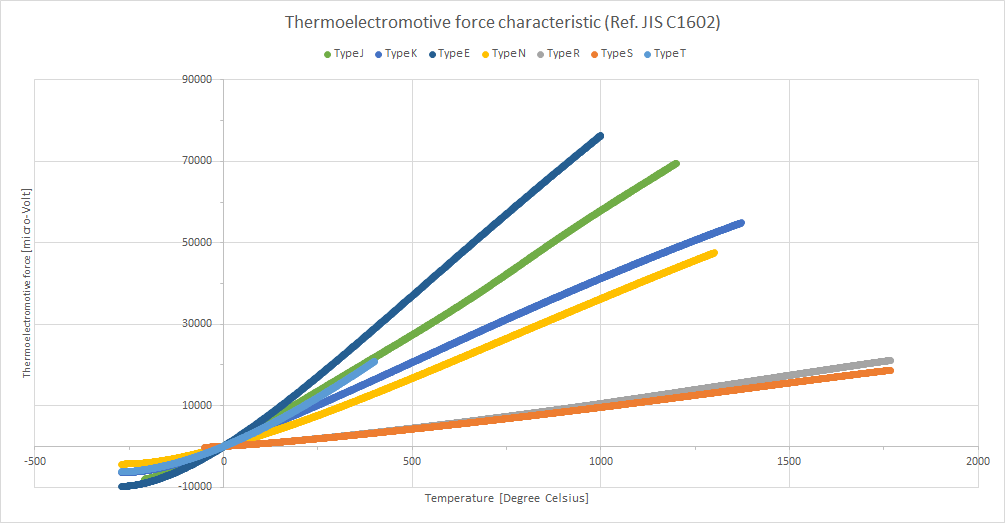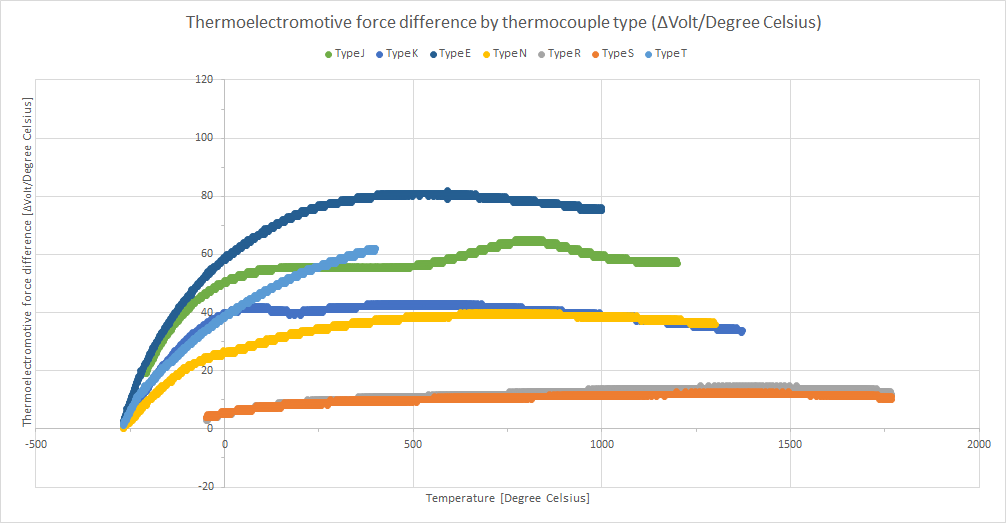
The thermocouple is made
up of two different metals.
Thermocouple types are specified in IEC 60584-1/JIS C1602 depending on
the metal used.
The table below summarizes the upper and lower limits of measurement
temperature and the characteristics of thermoelectromotive force depending
on the thermocouple type.
For details, please refer to IEC 60584-1/JIS C1602.
Thermocouple Type |
Construction Material |
Measurement Temperature Range |
Supplement |
||
+ Pin |
- Pin |
Lower Limit |
Upper Limit |
||
Type J |
Iron |
Constantan |
-210 |
1200 |
It has the next highest thermoelectromotive force characteristic after Type E. (from 50 to 65 micro-Volt per Degree Celsius) |
Type K |
Chromel |
Alumel |
-265 |
1372 |
The relationship between temperature and thermoelectromotive force is most linear from 0 to 900 Degree Celsius. (from 39 to 43 micro-Volt per Degree Celsius) |
Type E |
Chromel |
Constantan |
-265 |
1000 |
It has the highest thermoelectromotive force characteristics. (from 60 to 80 micro-Volt per Degree Celsius) |
Type N |
Nicrosil |
Nishil |
-265 |
1300 |
- |
Type R |
Platinum Rhodium |
Platinum |
-50 |
1768 |
It is used for precise measurement in high temperature region. For example, from 1000 to 1500 degree celsius. |
Type S |
Platinum Rhodium |
Platinum |
-50 |
1768 |
It is used for precise measurement in high temperature region. For example, from 1000 to 1500 degree celsius. |
Type T |
Copper |
Constantan |
-265 |
400 |
It is used for precise measurement in low temperature region. |
The relationship between thermoelectromotive force by thermocouple type
is shown in the figure below.
Please refer to this when selecting a thermocouple.

